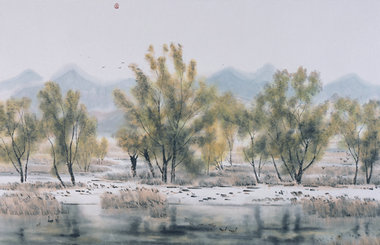 |
|
Derby resident Silvana Robertson walks in the garden of Elvaston Castle in November.[Photo by Alina Hartounian/Associated Press]
|
Plague Village
Among the many picture-postcard villages tucked in Derbyshire's countryside is Eyam, also known as the Plague Village. The disease came to Eyam via London, in a rolled-up cloth, and quickly spread in 1665, killing 260 villagers within 14 months. What made Eyam different was a local rector's decision to quarantine the village, a move that kept the pestilence from spreading across northern England. Church gatherings were held outside, the dead were buried in backyards instead of the churchyard and money was exchanged with other villages on a boundary stone where it could be washed in vinegar. Vestiges of these heroics are all over the village, including the cottages where the plague first took hold and the boundary stone. The church includes a list of the plague dead and the grave of a single plague victim, the wife of the rector who called for the quarantine. A museum tells the villagers' stories and plaques dotted around Eyam give slices of its history. Public stocks still stand in a village green.


























 Raymond Zhou:
Raymond Zhou: Pauline D Loh:
Pauline D Loh: Hot Pot
Hot Pot Eco China
Eco China China Dream
China Dream China Face
China Face






